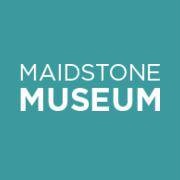Julius Brenchley: Maidstone’s Gentleman Explorer

Collections Manager, Samantha Harris, introduces one of Maidstone Museum’s most adventurous collectors, Julius Lucius Benchley, Maidstone’s Gentleman Explorer. He is something of a ‘poster boy’ for the museum, and best known for the amazing world culture collections he donated.
Julius Lucius Brenchley was born in Maidstone on 30 November 1816. He was one of four siblings along with Algernon, John and Laura. During his childhood he attended Maidstone Grammar School, and later St Johns College at Cambridge. As was common during the Victorian period for gentlemen of his status, he was destined for a future in the church, and in 1843 became a curate of the newly built Holy Trinity Church, Maidstone (now the Trinity Foyer on Church Street).
The Brenchleys were a wealthy local family, running the Lower Brewery on Stone Street, Maidstone and another on Brewer Street. Due to this position in the community, a number of Brenchleys were Mayors of Maidstone. Thus they were a family of means, which enabled Julius and Algernon to go on a Grand Tour of Europe with their father, which was an essential cultural activity of the time. Sadly Brenchley’s father died in Paris in 1847, but by this time Julius had caught the travel bug and he continued to travel and collect for the rest of his life gathering natural history specimens, fine art and ethnographic (world culture) objects.
Julius led a fascinating life, with many exciting adventures which sound like they come from a Hollywood movie, including:
- In Russia sledging across Siberia in the depths of winter
- In America travelling across the continent, being shot in the neck by native Americans in Utah (and donating the arrow to the museum on his return!)
- In Ecuador falling into the smoking crater of the Pichincha Volcano
- In Hawaii, being befriended by members of the royal family (and commissioned some of the earliest photographic portraits or ‘daguerreotypes’)
- Publishing his journey to Australia and the Pacific Islands in ‘Jottings during the cruise of H.M.S. Curaçoa among the South Sea Islands in 1865’
- In Paris, being caught in the Prussian Siege of 1870
- Travelling to all continents on the globe apart from Antarctica (which no doubt we would have visited if he had lived longer!)
Something which stood Brenchley apart from other European travellers of the time, (especially one who had been ordained), is that he made no attempts to convert the people he met despite travelling on occasion with Mormons in America and missionaries in the Pacific Islands. Instead of having a religious motivation, he was content to observe and learn from the people he encountered from different cultures rather than use conversion to Christianity as a tool, which was historically seen as ‘civilising’ non-European cultures.
Brenchley seemed to have travelled with a genuine interest in how other people lived their lives, what their cultures involved and the artefacts they used. He collected without any religious, political or cultural agenda, for the furtherance of his own knowledge and that of his fellow citizens of Maidstone, choosing objects which he thought would be useful in the education and enjoyment of others.
He collected items of immense cultural value (this is why part of his collection is also held at the British Museum, London). He amassed the collections fairly and ethically, by trade, exchange and as gifts as marks of friendship and respect. This is clear from the sorts of objects he was collecting such as weapons, bark cloths, carved bowls, masks and personal adornment. This form of collecting cannot be said for all collectors of the time unfortunately, some of whom were unscrupulous in their methods.
Interestingly we have accounts of some of his journeys, giving quite specific dates and provenance for his collecting. These accounts were either written by him in the case of his handwritten notebooks and the published ‘Jottings during the cruise of H.M.S. Curaçoa among the South Sea Islands in 1865’ detailing his Pacific Island travels. But we also have records made by his companions in the case of ‘A Journey of Great Salt Lake’ by Jules Remy, recording their experiences together in America.
Julius first visited the Museum in 1868, and after meeting William Lightfoot, the curator, he started to send consignments to the Museum by 1869. Brenchley also generously donated £400 toward the West Wing in 1870 showing great philanthropy, as well as making his collection widely available to all. It was also during one of his visits to the museum that he saw construction of the nearby Maidstone East train station was underway, and decided to purchase the last green space between the museum and the station, and donate it to the people of Maidstone. It is now named after him: Brenchley Gardens.
The Brenchley coat of arms and Latin motto can still be seen on the West Wing (Kent River Safari gallery doorway)
After his last adventure, Julius Brenchley died in February 1873, in Folkestone aged 56. Records suggest the cause was either a heart condition or a travel-related illness. The remainder of his collection was donated to Maidstone Museum, with his entire collection numbering thousands of artefacts
As you’ve seen, Brenchley was a fascinating character, and the collections he donated tell internationally significant stories linking back to Maidstone through his passion and generosity. So please come and see the exciting and surprising collections and hear about the cultures and countries he visited!
I’ll leave the last words to Brenchley, the man himself with his motto: ‘Wander, marvel and adore’.
